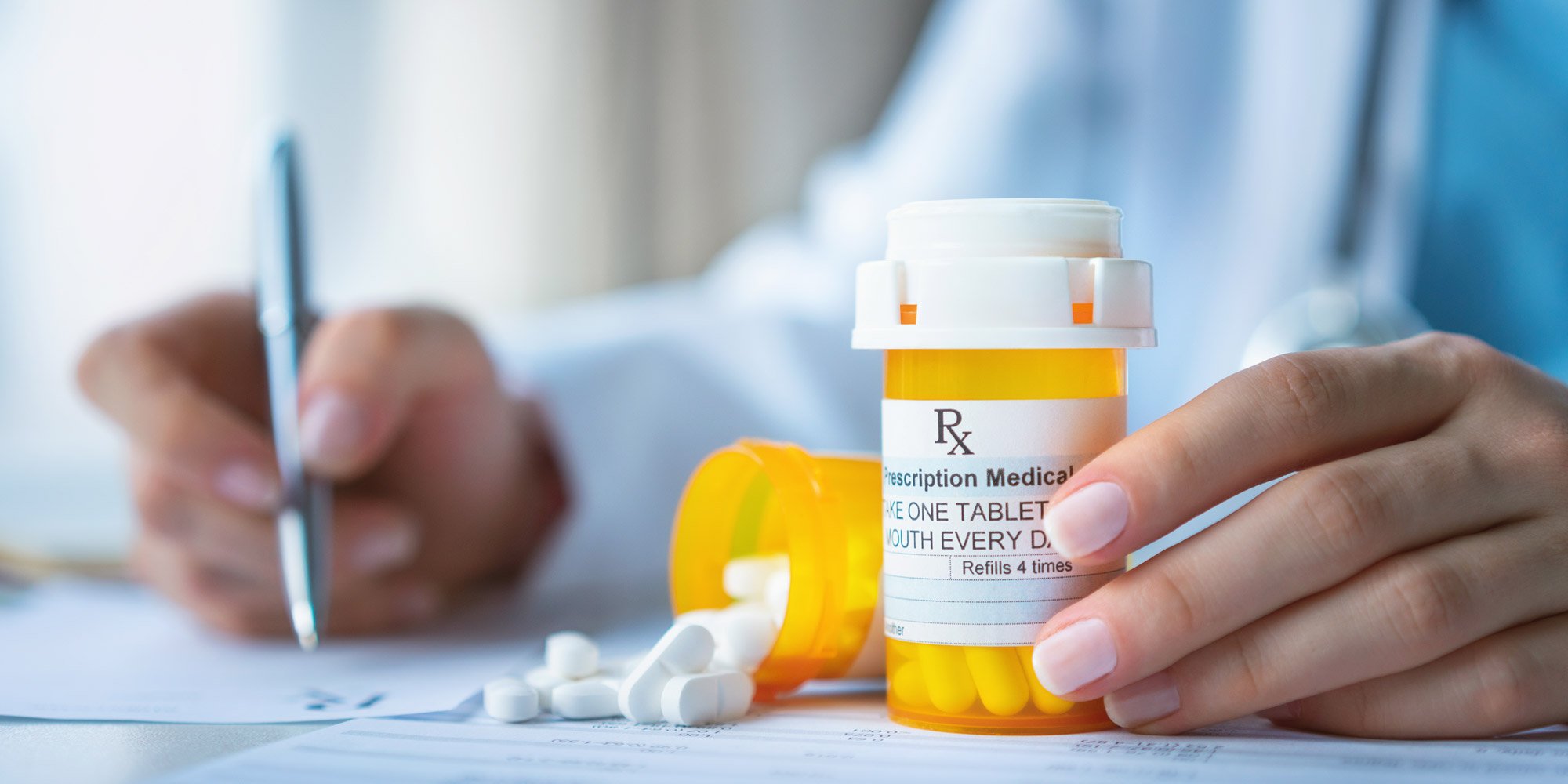
Dallas, TX
We’ve outlined the common medications used In medication-assisted treatment (MAT), which combines counseling and behavioral therapies with medication to provide a “whole-patient” approach to the treatment of substance use disorders including opioid use disorder (OUD), alcohol use disorder and smoking.[i] MAT is the standard of care. The National Institute on Drug Abuse, Substance Abuse and Mental Health Services Administration, National Institute on Alcohol Abuse and Alcoholism, Centers for Disease Control and Prevention, and other agencies emphasize MAT as the first-line treatment for OUD.[ii]
The Food and Drug Administration (FDA) approved three medications to treat OUD — methadone, buprenorphine and naltrexone. These medications help people living with addiction manage cravings and reduce withdrawal symptoms so they can actively work on their recovery.
Methadone
Methadone is a long-acting full opioid agonist. It attaches to the same brain receptors as short-acting opioid painkillers or heroin but without producing the more dramatic highs and lows that occur when opioids are abused. This helps relieve the patient’s physiological opioid craving and normalizes the body’s metabolic and hormonal functioning that was impaired by the use of illicit opioids. In addition, methadone diminishes the euphoric effects of other opioids, leaving the patient with little desire to abuse illicit street drugs.
Methadone maintenance therapy is much like using “The Patch” or nicotine gum to quit smoking. Cigarette smokers are addicted to nicotine. It is exceedingly difficult to quit smoking by going “cold turkey.” So, instead, many people use “The Patch” or nicotine gum to regulate and control their nicotine cravings while they learn to live without cigarettes. Eventually, they are weaned off of the nicotine replacement and are able to live completely cigarette- and nicotine-free. Methadone treatment is akin to “The Patch” for persons with opioid dependence — methadone regulates and controls their cravings while they learn to live without drugs and abandon the harmful lifestyle that accompanies drug use. The only difference between a nicotine addiction and an opioid addiction is the substance abused.
Methadone can only be administered in highly regulated opioid treatment programs (OTPs), such as those run by BHG. Unlike illicit drug use, when methadone is taken as prescribed, it is safe and effective. Long-term administration causes no direct damaging effects to the heart, lungs, liver, kidneys, blood, bones, brain, or other vital body organs. Some mild side effects may arise during the initial phase of treatment, but they usually subside or disappear as the patient’s dosage is adjusted and stabilized, or when simple medication interventions are initiated.
FDA-approved methadone products for OUD treatment include[iii]:
- Dolophine (methadone hydrochloride) tablets
- Methadose (methadone hydrochloride) oral concentrate
Buprenorphine
Buprenorphine is a partial opioid agonist, meaning it binds to the opioid receptors in the brain, but activates them less strongly than full agonists like methadone or illicit opioids. This means it can reduce cravings and withdrawal symptoms without the dramatic highs and lows of illicit drug abuse. It is available either on its own or in combination with naloxone[iv], which further reduces the ability of a person to get “high” while using the medication. It is typically regarded as being effective for less advanced or severe substance use disorder but may not be as effective as Methadone for more severe cases such as IV (intravenous) opiate and Heroin use.
Buprenorphine treatment is most typically provided via physician office practices and in OTPs, such as the clinics BHG operates. We offer buprenorphine in some of our facilities for patients who may want to start with that option. In areas where we do not provide buprenorphine as an adjunct therapy, we work with non-OTP providers (who are limited to working only with buprenorphine in an office-based setting) on a referral basis, as we believe in trying to get each patient into the treatment that is most appropriate for them.
FDA-approved buprenorphine products for OUD treatment include[v]:
- Bunavail (buprenorphine and naloxone) buccal film
- Cassipa (buprenorphine and naloxone) sublingual film
- Probuphine (buprenorphine) implant for subdermal administration
- Sublocade (buprenorphine extended‐release) injection for subcutaneous use
- Suboxone (buprenorphine and naloxone) sublingual film for sublingual or buccal use, or sublingual tablet.
- Subutex (buprenorphine) sublingual tablet
- Zubsolv (buprenorphine and naloxone) sublingual tablets
Naltrexone
Naltrexone is an opioid antagonist, meaning that it blocks the activation of opioid receptors. This decreases cravings and prevents any opioid drug from producing a “high,” however, it does not relieve opioid withdrawal symptoms. Naltrexone is given as a long-acting injectable, meaning its effects last for weeks. According to the National Institute for Drug Abuse, this makes naltrexone “a good option for patients who do not have ready access to health care or who struggle with taking their medications regularly.”[vi]
FDA-approved naltrexone products for OUD treatment include[vii]:
- Vivitrol (naltrexone for extended-release injectable suspension) intramuscular
What about Narcan?
Narcan is a brand name of naloxone, an opioid antagonist. This is not a treatment for opioid addiction; rather, it is used in acute situations to reverse opioid overdose. You can learn more about naloxone on the Substance Abuse and Mental Health Services Administration’s website.
Ultimately, medication-assisted treatment uses a combination of medication, such as those outlined above, social support services, as well as counseling to provide a comprehensive approach to treatment – one that allows patients to return to productive lives within their families, jobs and communities. Medication-assisted treatment can help patients overcome one of the largest obstacles in opioid addiction – managing the physical dependence and withdrawal symptoms – and when it’s complemented with personalized counseling and social services, this course of treatment has decades of evidence demonstrating its effectiveness and is considered the gold standard of care.
Sources
[i] https://www.samhsa.gov/medication-assisted-treatment
[ii] https://www.samhsa.gov/medication-assisted-treatment
[iii] https://www.fda.gov/drugs/information-drug-class/information-about-medication-assisted-treatment-mat
[iv] https://www.drugabuse.gov/publications/research-reports/medications-to-treat-opioid-addiction/how-do-medications-to-treat-opioid-addiction-work
[v] https://www.fda.gov/drugs/information-drug-class/information-about-medication-assisted-treatment-mat
[vi] https://www.drugabuse.gov/publications/research-reports/medications-to-treat-opioid-addiction/how-do-medications-to-treat-opioid-addiction-work
[vii] https://www.fda.gov/drugs/information-drug-class/information-about-medication-assisted-treatment-mat
About BHG
Behavioral Health Group (BHG) is a fast-growing healthcare company creating a new class of recovery center for individuals with substance use disorder (SUD). BHG specializes in medication-assisted recovery (MAR) combined with addiction counseling delivered through the largest network of Joint Commission-accredited outpatient treatment and recovery centers in the U.S. Founded in 2006 and led by an experienced executive team with deep experience in the healthcare and behavioral health industries, BHG believes that comprehensive, evidence-based, personalized treatment plans focused on real recovery restore lives, strengthen families, and rejuvenate the communities in which we serve. BHG capabilities include a full range of counseling and behavioral health therapies for individual, family, and group counseling, medication-assisted recovery, intensive outpatient programs, mental health services, case management, and community resource coordination services delivered in its treatment centers and through telehealth. BHG treatment centers provide access to all FDA-approved medications through in-center dosing or prescriptions programs. BHG accepts Medicare, Medicaid, most major commercial health plans, and works with state grants to support patients who choose to self-pay. With 117 locations in 24 states, BHG has more than 2,100 employees who serve more than 43,000 patients. To learn more, visit bhgrecovery.com.
